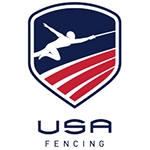If promotional money is not a concern, no sporting events match the international opportunity for sports marketers than soccer’s World Cup, the Olympics and the Super Bowl. But they also have major draw backs: high cost and a short life span, especially for marketers that want a year-round publicity element for their sports marketing efforts.
Soon a sport that in the past was covered by the media on a daily basis, but now receives scant attention - thoroughbred racing - will again have its yearly 15-minutes, which can last from one to about six weeks.
The spotlight being turned on is thoroughbred racing’s Triple Crown, - the Kentucky Derby on May 2, the Preakness on May 16, and the Belmont Stakes on June 6. Even though The Triple Crown has great publicity blitz potential beyond the weeks leading up to the races, (and also has major ambush marketing possibilities, as does thoroughbred racing in general), it largely goes untapped by marketers, perhaps because it has such a short shelve life.
The negative fallout from last year’s Triple Crown, when California Chrome failed to win the final leg of thoroughbred racing’s tiara, resulted in the thoroughbred’s co-owner receiving more headlines than the horse that won the Belmont Stakes, Tonalist. [He said it wasn't fair that Tonalist didn't compete in the first two races, while his horse did.]
Why the Kentucky Derby, Preakness and Belmont, a race for three-year-olds, instead of three other races, should be designated The Triple Crown is a tribute to the PR skills of the individuals who thought it up.
The controversy about “Chrome’s” co-owner’s comments relate to the PR business in several ways:
- It shows how one moment of speaking from the heart can destroy a person’s hither to sterling reputation.
- It shows why clients should be told not to speak immediately after a negative event but should withhold comments for a while, which goes against the practice of many PR crises experts, whose advice too often is “respond ASAP,” which I’ve always disagreed with.
- It shows why public relations advisers should always have a fall back strategy in the event that things go bad.
- It shows why savvy sports marketing PR people should try to convince clients to spend the bulk of their budget on the Big Three of American sports, baseball, football and basketball, because:- even if “Chrome” would have won The Triple Crown the story would have lasted only several days longer.
- The same short shelve life is true with hockey, which fades away for months after the Stanley Cup and for the Summer and Winter Olympics and the World Cup, which can disappear from media coverage for years. All three have short publicity shelf lives.
- The beauty of the Big Three sports – baseball, football and basketball – is that they are written and talked about throughout the year, so an extended publicity campaign without an overly expensive advertising support program is possible.
It’s true that the lead-up to the Triple Crown, and for the few weeks between races, features media coverage reporting on past Triple Crown winners. And media interest will grow enormously if one horse wins the first two legs, but where was the client involvement in the coverage?
The most important Lesson Learned from last year’s Triple Crown is that for marketers the sporting event of the moment can engender as much negative as positive publicity and that for a year-round marketing campaign that includes strong publicity components nothing beats baseball, football and basketball.
Oh, yes. Another Lesson Learned from last year’s Triple Crown is that there’s no sure winner. That also applies to marketing campaigns.
Arthur Solomon, a former senior VP at Burson-Marsteller, contributes to PR and sports business publications, consults on PR projects and serves on the Seoul Peace Prize nominating committee. He can be reached at [email protected].


 Even the most iconic sporting or ceremonial event can be deep-sixed by an overzealous member of the crowd, so crisis comms pros need to be prepared.
Even the most iconic sporting or ceremonial event can be deep-sixed by an overzealous member of the crowd, so crisis comms pros need to be prepared. The Super Bowl, with its massive audience and sky-high ad cost, creates intense pressure to deliver. But when they hit the mark, these ads can become cultural touchstones.
The Super Bowl, with its massive audience and sky-high ad cost, creates intense pressure to deliver. But when they hit the mark, these ads can become cultural touchstones. Teneo has hired Nick Greenslade, deputy sports editor at The Times and Sunday Times, as managing director for its strategy and communications unit in London.
Teneo has hired Nick Greenslade, deputy sports editor at The Times and Sunday Times, as managing director for its strategy and communications unit in London. Jon Schwartz, a former SVP, communications, marketing, digital & social for the Big Ten Conference, is signing up with Prosek Partners to launch a new sports business unit.
Jon Schwartz, a former SVP, communications, marketing, digital & social for the Big Ten Conference, is signing up with Prosek Partners to launch a new sports business unit. USA Fencing has retained Finn Partners ahead of the 2024 Paris Summer Olympics and Paralympics Games.
USA Fencing has retained Finn Partners ahead of the 2024 Paris Summer Olympics and Paralympics Games.


 Have a comment? Send it to
Have a comment? Send it to 
No comments have been submitted for this story yet.